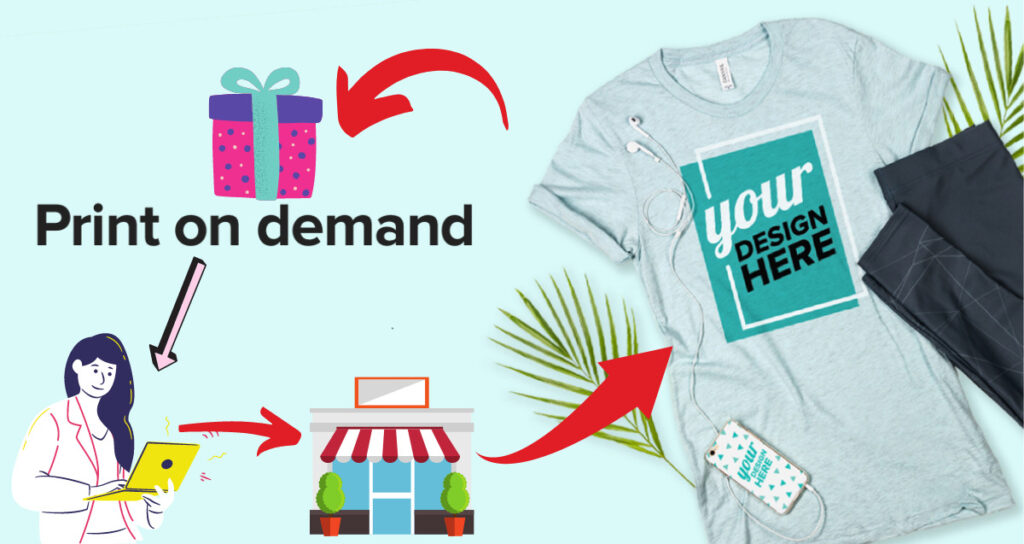What Is Print On Demand (POD)? And Why Is It Becoming So Popular?

Print On Demand
Print on demand (POD) is a printing process that allows customers to print products without having to stock any physical product. This saves businesses money, since they no longer have to maintain inventory. Furthermore, POD allows businesses to target specific markets and demographics by printing only the products customers are interested in. As print technology has evolved, so too has the popularity of POD. In recent years, it has become one of the most popular printing processes because of its flexibility and convenience. By understanding why POD is becoming so popular, you’ll be able to better cater your printing needs to your business’s needs.
What is Print On Demand (POD)?
Print on demand (POD) is a printing technology that enables publishers to print books, magazines, newsletters, and other printed materials directly from their own web servers. POD systems allow publishers to increase their printing output while maintaining control over the production process and quality of their products.
POD publishing has been around for a few years, but recent developments are fueling its growth:
-The rise of ebook readers. eBooks are now the dominant reading format, and many readers want the same book experiences they get when they read physical books. With POD, publishers can create copies of their ebooks that they can sell through retailers like Amazon and Barnes & Noble. This means that POD is becoming more popular not just with traditional book buyers, but also with reader demographics like students who don’t have access to libraries or those who prefer to buy books in eBook form rather than rent them.
-The expansion of digital publication platforms. More and more publications are moving away from traditional print formats in favor of digital versions that can be distributed through websites and mobile apps. With POD, publishers can create high-quality PDFs or electronic files that can be used in any publication platform.
-Shift in consumer preferences. Increasingly, consumers are looking for products and services that are convenient and easy to use. With POD, publishers can offer customers direct access to their content from anywhere at any time – perfect for magazines that want subscribers to have instant access to current issue
The Advantages of POD
Print on demand (POD) is a printing method that allows customers to print documents, such as books and magazines, by ordering them directly from the publisher. POD systems are often used by small businesses because they can be costly to set up and maintain, but they can also be a cost-effective way to distribute publications.
One of the advantages of POD is that it allows you to customize your publishing process. You can choose how many copies you want to print, how large the book or magazine will be, and how quickly you want them delivered. This flexibility can save you money because it may be cheaper to produce a smaller number of copies than a larger number of copies.
Another advantage of POD is that it makes it easier for publishers to reach new customers. With POD, publishers no longer have to rely on guide for print on demand store or other retailers to carry their publications; they can sell their books and magazines directly to consumers online. This means that publishers can more easily tap into a wider audience than they would if they depended on traditional distribution channels.
Finally, one of the biggest advantages of POD is that it enables publishers to keep control over their content. With POD, publishers can set their own prices and decide which formats (book or magazine) are best for reaching their target market.
How Does POD Work?
Print on Demand (POD) is a printing technology where publishers can print books and other printed materials without having to order large quantities upfront. POD systems take the order and print the requested items as they are ordered, which can be helpful for small businesses that don’t have the resources to keep a large inventory of printed products on hand.
POD works by depositing an order with a printer, who then prints the requested items when they are ordered. This system is advantageous for businesses because it eliminates the need to keep large inventories of printed materials on hand, as well as providing customers with quicker access to new titles. In addition, POD systems allow publishers to control how many copies of each title are printed and ensure that all orders are fulfilled in a timely manner.
Since POD was first introduced in the late 1990s, its popularity has grown steadily among small businesses and independent publishers. Today, POD is becoming increasingly popular among larger publishing companies as well, because it allows them to more efficiently manage their inventory and distribute their products globally.
Why Is POD Becoming So Popular?
Today, print on demand for dummies is a popular printing option because it allows you to control the finished product. You can also choose to have your book printed quickly and easily without having to deal with long lead times or waiting for a shipment.
Since POD printing is so popular, there are now many different companies that offer this service. Some of these companies include Lulu.com, Blurb.com, and BookSurge.com. Each of these companies has its own advantages and disadvantages, which you should research before making your decision about who to use.
One important consideration when choosing a POD company is the quality of their books. Make sure that the company you choose has a good reputation for producing high-quality books. Another factor to consider is the price of their books. Companies that charge more for their books typically have better quality books than those that charge less.






